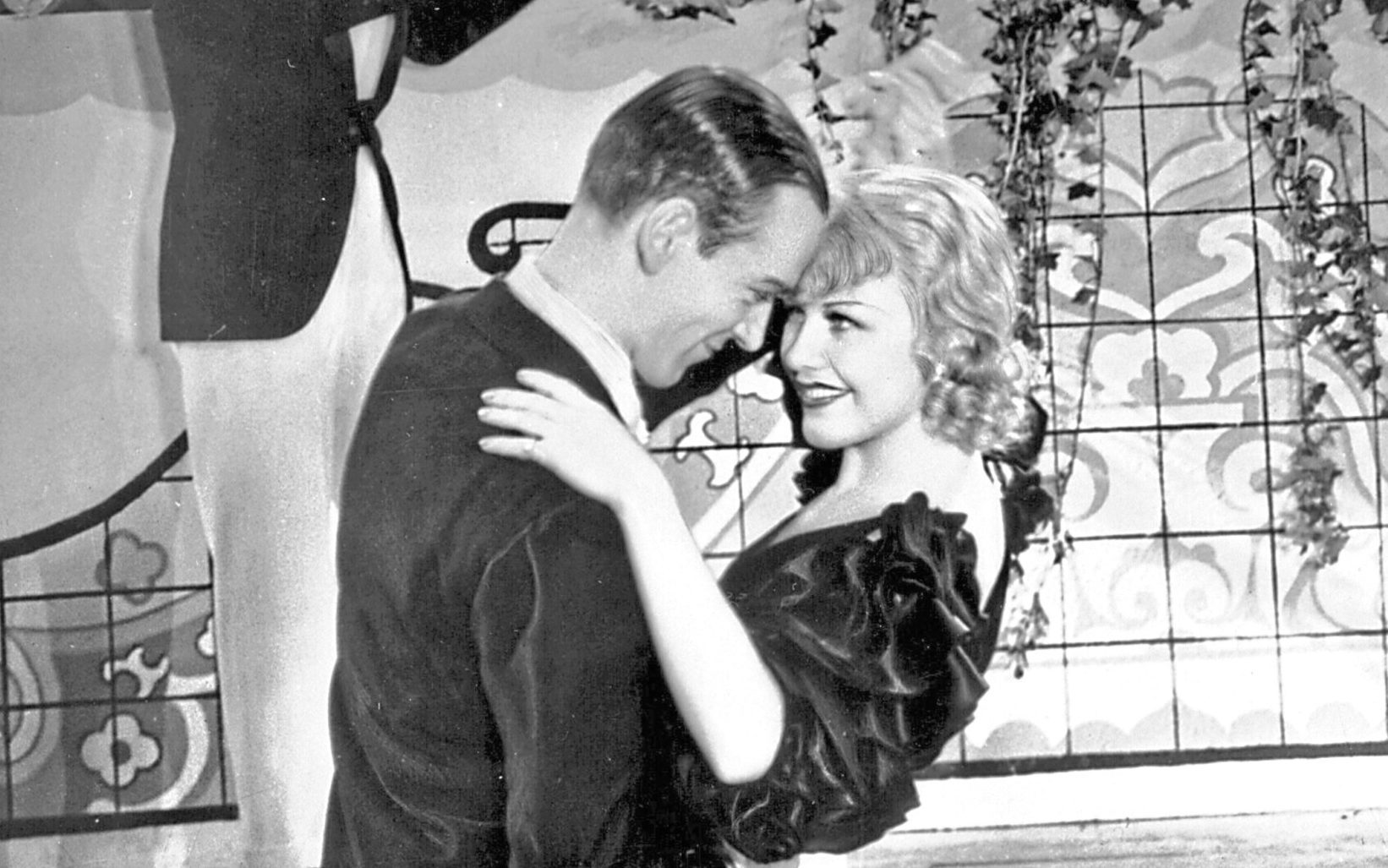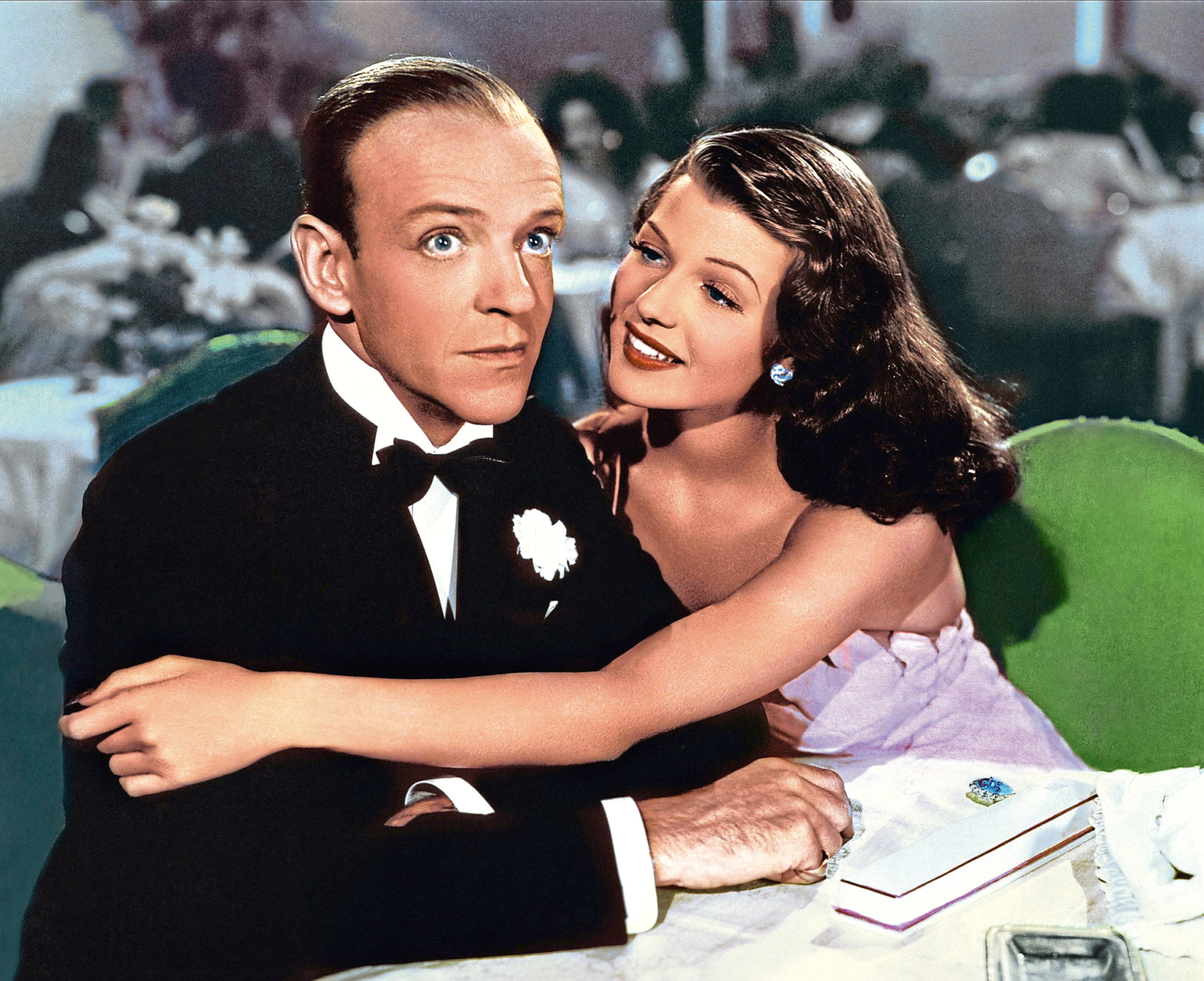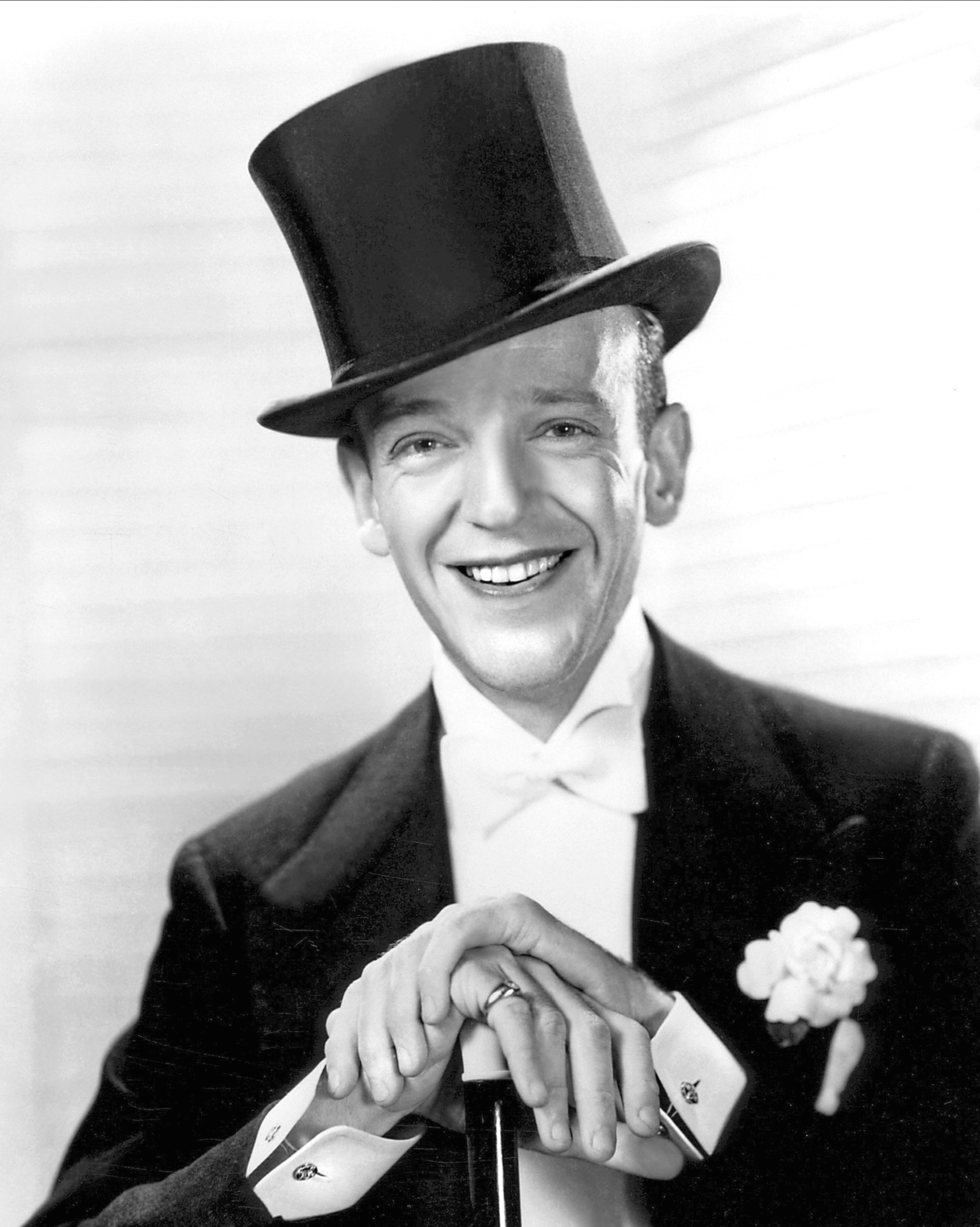
Part Two – read part one here.
THE first thing that happened in Fred Astaire’s RKO film career was that they loaned him to MGM — but if that felt like he wasn’t wanted, it worked out very differently.
Fred made his big Hollywood debut as himself, alongside Joan Crawford in musical Dancing Lady.
It went well, but he found himself well down the bill for his RKO start, Flying Down To Rio with Ginger Rogers.
The cinema magazines, if not the studio bosses, clearly saw the significance of Astaire, one even observing: “The main point of Flying Down To Rio is the screen promise of Fred Astaire.
“He’s distinctly likeable on the screen, the mike is kind to his voice and as a dancer he remains in a class by himself. Astaire starts dancing where the others stop hoofing.”
Interestingly, he seems to have been tired of the notion that he had to be part of a duo, as he had been with sister Adele.
“I don’t mind making another picture with her,” he told his agent after one pairing with Ginger Rogers, “but as for this team idea, it’s out!”
He was, thankfully, soon persuaded otherwise by the public reaction to seeing him and Ginger together. They looked fantastic, danced perfectly together and the chemistry was all there.
Their partnership, aided by Fred’s incredible choreography – he seemed able to float above himself and work out his and her moves – would influence and shape Hollywood musicals forever.
Fred and Ginger, in fact, would make no fewer than nine RKO flicks, such as Top Hat (1935), Swing Time (’36) and Shall We Dance the year after.
Katharine Hepburn, never troubled when looking for the perfect phrase to sum things up, said: “He gives her class and she gives him sex appeal.”
The bottom line, before he was so rich money meant nothing, was still hard cash for a man whose lifestyle required lots of it.
So it helped, to say the least, that Fred became one of the few men in Tinseltown earning a share of each film’s profits. As he had autonomy over how his dances would look, Fred Astaire had more power than many a producer or director, never mind other actors.
Charming, elegant, great on his twinkletoes, but nobody’s mug!
One of his innovations was to have a dolly camera close-tracking the dancers to have as few shots as possible so that the couple would be in view the whole time.
The camera may be moving, but it gave the impression that it was stood still while the dancers flung themselves around the set.
All the way through to 1968, when he made his last movie musical Finian’s Rainbow, Astaire would employ this idea – it was only Francis Ford Coppola, another film obsessive and perfectionist, who over-ruled him.
Fred admired the Busby Berkeley musicals, as everyone did, but he wanted a total contrast in his own work, and none of that row upon row of just feet, or hats, stuff!
Both dancers, from head to toe, in full view at all times, that was the Astaire way and – despite what Coppola thought – it was the best way.
Fred went further, realising all the powers the studios were giving him. He insisted that any song-and-dance stuff had to fit in with the storyline. If it could move the plot along and add to the movie’s pace, then and only then would he and his partner start dancing.
He also used three standard dances, a solo by himself, a comedy dance and a romantic dance, and he made sure such a threesome featured in all movies.
All of this power didn’t mean that Fred Astaire was a control freak, but merely that as the best-loved dancing man on Earth, he knew best, and he did!
They say that in his heyday with Ginger Rogers, women around the world would daydream about dancing with Fred Astaire – and the reason is because Ginger made it look so exciting and romantic.
If he hadn’t fancied being just 50% of another duo, he must have admitted to himself many times that Astaire and Rogers did create a kind of magic.
He was also well aware that Ginger had really had to bust a gut to do it this well, because she’d been thrown into all this with precious little real dancing talent.
“Ginger had never danced with a partner before Flying Down To Rio,” Fred pointed out. “She faked it an awful lot. She couldn’t tap and she couldn’t do this and that, but Ginger had style and talent and improved as she went along.
“She got so that after a while everyone else who danced with me looked wrong!”
Readers may recall an Astaire interview with Michael Parkinson in 1976, when Fred insisted: “I must say Ginger was certainly the one. Everyone knows. That was a whole other thing, what we did. I just want to pay a tribute to Ginger because we did so many pictures together and, believe me, it was a value to have that girl. She had it! She was just great!”
From the dance perfectionist who hadn’t wanted the same partner over and over, it was all quite a revelation, but then, the rest of us knew it already.
Still, he did try to dance with others, as a failed attempt with Joan Fontaine in 1937’s A Damsel In Distress showed. If it wasn’t Ginger Rogers, though, it somehow lacked that spark.
There was a later match-up with Ginger, too, in their final MGM flick, The Barkleys Of Broadway in 1949, their only movie filmed in Technicolor.
His first new partner after Ginger had been Eleanor Powell, the world’s greatest tap dancer of her time in the opinion of many.
If he loved Ginger’s romance and quick learning skills, he loved this lady for her no-nonsense, floor-stomping approach.
“She put ’em down like a man,” he said of Powell’s tap talents. “No ricky-ticky-sissy stuff with Ellie! She really knocked out a tap dance in a class by herself.”
Powell also seemed to bring out the humour in Fred, but if many expected a meeting of Astaire and Bing Crosby to be fantastic, too, it left Fred underwhelmed.
They did Holiday Inn together in 1942, and Blue Skies four years after, but, while it made them bucketloads of dollars, Fred was said to be dissatisfied with both.
But just take a look again at Holiday Inn, with Astaire’s astonishing solo dance to Let’s Say It With Firecrackers, and you’ll wonder how he could possibly have felt dissatisfied.
And then there’s Blue Skies with his scenes for Puttin’ On The Ritz – only a perfectionist could have felt less than thrilled with these classic moments.
If he had been worried about dancing with actresses who lacked dance knowledge, he needed have no such fears about a certain Rita Hayworth. The daughter of dancers, the beauty with the perfect legs, born Margarita Carmen Cansino, was ideal for him.
They would make just two movies together, You’ll Never Get Rich in 1941 and You Were Never Lovelier the following year.
Fred Astaire could add authentic Latin American elements to his routines, knowing he had the dream girl to do so with him. They were – you could have bet your mortgage on it – a raging success together, and audiences couldn’t get enough of them. The unthinkable – that Fred and Ginger could be almost forgotten – had happened.
If the world expected a third one with Hayworth, what they actually got was Astaire and teenager Joan Leslie in war drama The Sky’s The Limit, from 1943.
Just 17, she could play saxophone, accordion and banjo, and impersonate Katharine Hepburn and Jimmy Durante, and would appear in High Sierra, Yankee Doodle Dandy, getting a Golden Boots Award and a Hollywood Walk of Fame star.
But it was her one and only film with Fred, and saw him in an unusual role, much more troubled and dark than his usual, and apparently too strange for his usual huge audiences.
His next flicks, Yolanda And The Thief and Ziegfeld Follies, would fare much better, with Lucille Bremner his latest sidekick.
He teamed up with that other dance hero, Gene Kelly, for The Babbit And The Bromide, a Gershwin number that would have had lovely connotations for Astaire. He had often danced to it with his sister back in the 1920s.
Many in showbiz say announcing a retirement far earlier than expected has allowed artists to re-evaluate and then make a comeback, even better than they were before. To some, Fred Astaire’s shock 1946 announcement that he planned to retire let him do likewise.
As you’ll see in next week’s third and concluding part, the years ahead would certainly not see him don the slippers, light the pipe and put his famous feet up.


Enjoy the convenience of having The Sunday Post delivered as a digital ePaper straight to your smartphone, tablet or computer.
Subscribe for only £5.49 a month and enjoy all the benefits of the printed paper as a digital replica.
Subscribe

